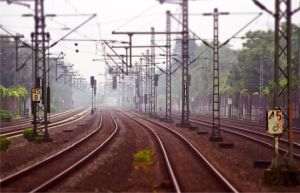Last spring, on the wall between the Post office and the building of CEC Bank near the Palace Hall, among the other doodles, I saw this phrase written in yellow: "I"m calling you inside the wall".
I don"t know much about poetry, but to me that verse could stand alone.
It is unclear: is it about sticking my head inside the wall and calling for someone, or whether I am inside the wall and I"m calling from there, and in this last version, it"s not clear enough whether we"re talking about calling from inside the wall to someone on the outside or from inside the wall to someone stuck inside another wall.
That verse can mean all of the above - something that no other art form besides poetry can do.
That"s why I believe the verse "I"m calling you inside the wall" is good enough to be called poetry, even if I don"t know much on that subject.
Every time I"d go shopping for bread in the morning, I"d go through that hallway and read the four words.
After a while, I thought I could tell that the author of the verse was a woman, judging by the roundness of the writing. I then figured she must have been about sixteen years old - the writing was schoolgirl like, and so was the tone of helplessness and the use of graffiti.
The fact that the sentence didn"t have the closing dot didn"t seem that relevant.
But one morning in autumn, when I was buying bread, thirty meters from that hallway, on the George Vraca street, five other words written by the same hand, with the same yellow paint: "and I can"t see you anymore."
It was the missing piece from the other phrase - "I"m calling you inside the wall and I can"t see you anymore". It spanned across the whole length of the street - just like one of Romania"s medieval rulers whose severed head was left at the Dealu Monastery, while the body was found near the town of Turda.
Writing it like this wasn"t a logical choice.
It would have made more sense to write it the other way around.
"I can"t see you and I"m calling you".
But the author tried to express something else than what logic dictates.
Which leads me to believe that Bucharest has its share of poets.
Perhaps a third verse was written even further away, perhaps on Mihai Eminescu street, and so on and so forth. Maybe written by someone else"s hand, and maybe not in yellow.
If we looked carefully, perhaps we could find more verses between "fuck you" and "down with Iliescu", on the walls of the Republica subway station.
That morning, with the milk and the bread in front of me, with the TV set off, I was listening to the noise of the city, sounding like a distant music.
I wish everyone a Happy Easter!
Note
We could of course infer that those lyrics are inspired by the Romanian ballad of Manole the mason, who buried his wife inside the walls of the monastery he was building to keep it from crumbling:
"You could not see her anymore,
But you could hear her
Calling from inside the wall"
The resemblance between the two poems is striking.
Which wouldn"t be a bad thing in itself, but this kind of approach would diminish the effect of the split poem that I saw.
Today, the part of that inscription inside the hallway has been covered by a coat of ugly orange paint.























































